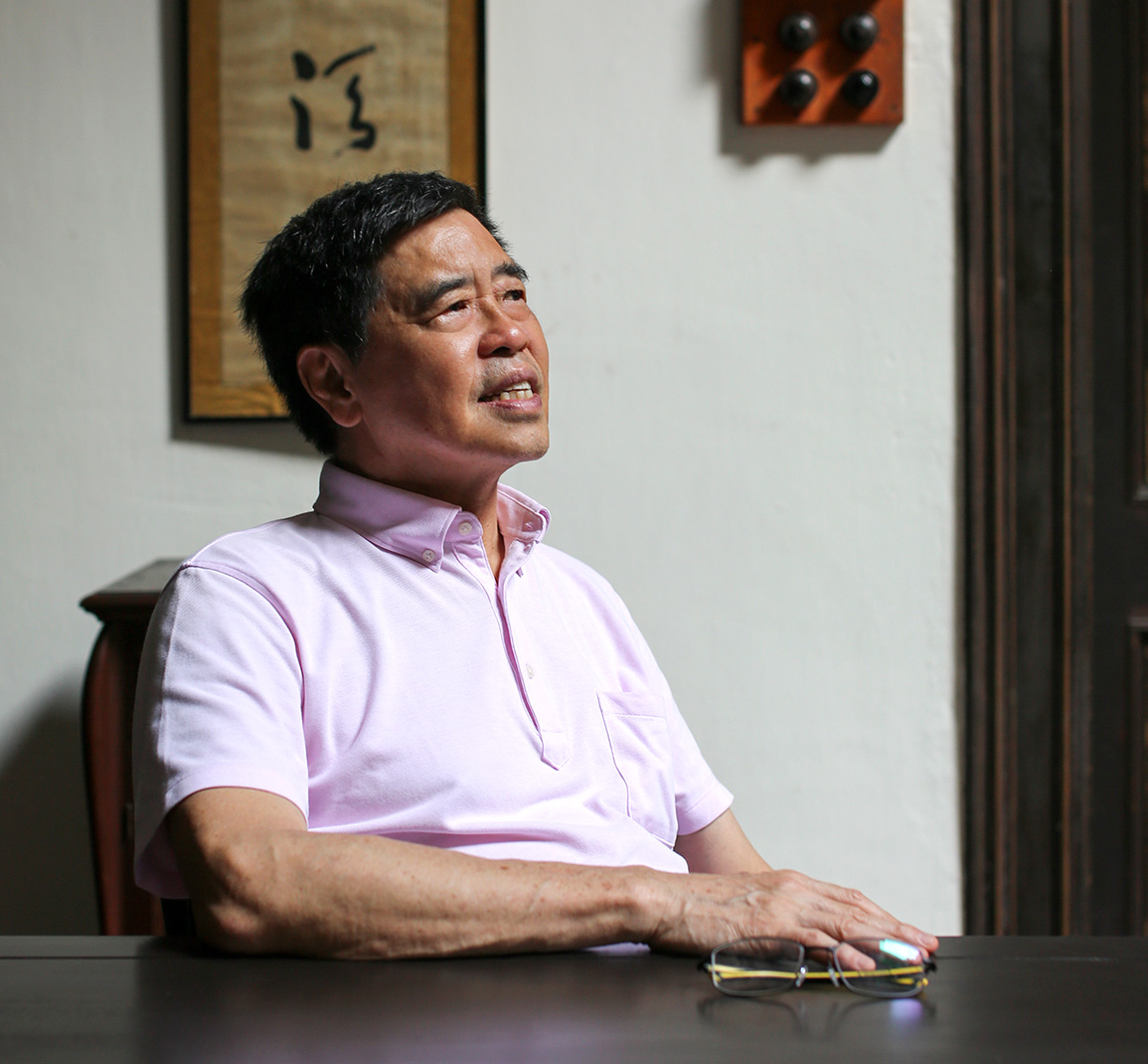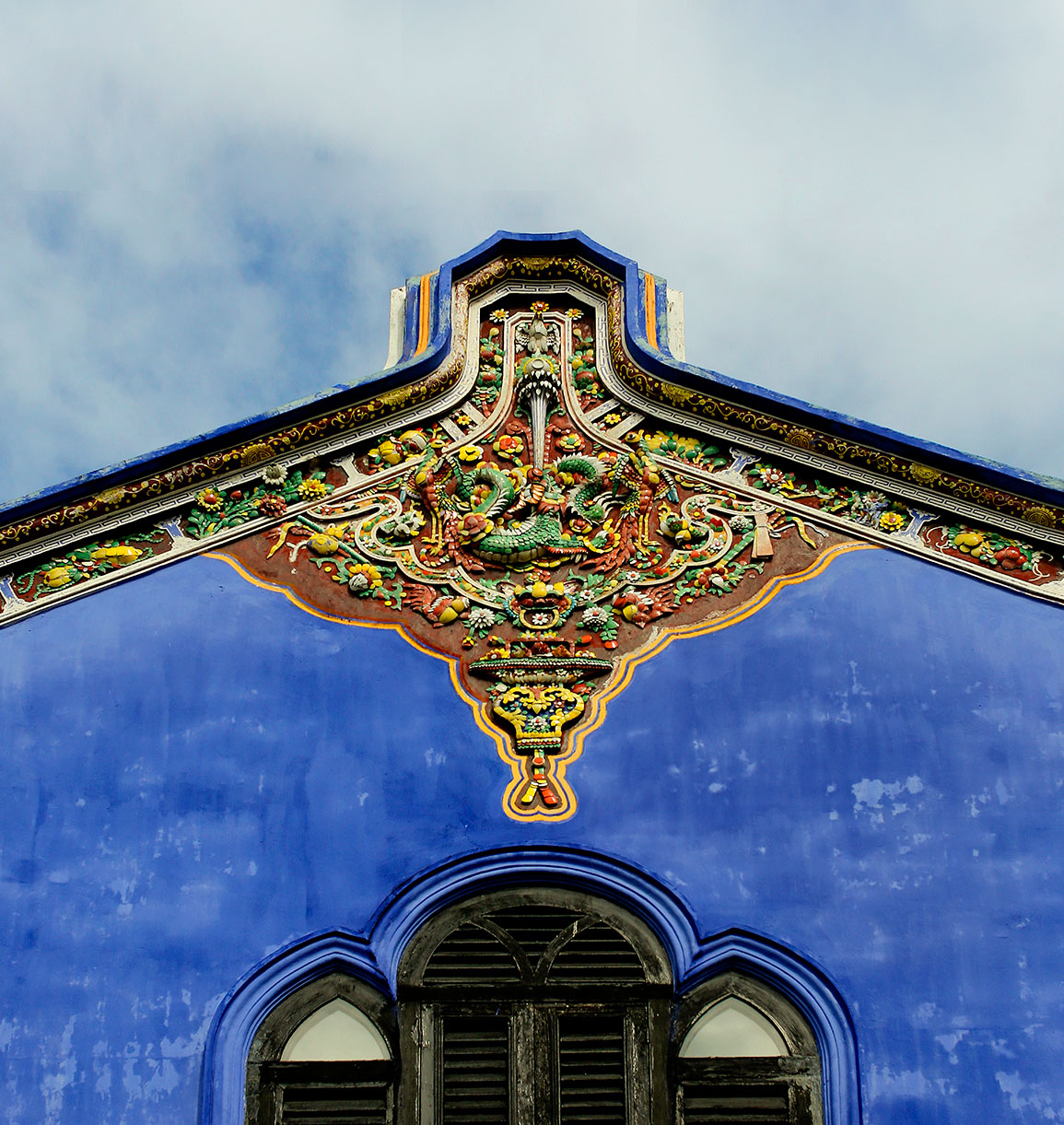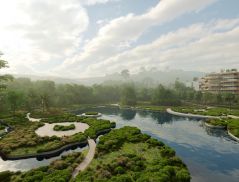
As a conservation activist in this part of the world, is there anyone you look up to?
I never had a role model as I was not exposed to the theoretical and technical bit of conservation. Before, I didn't know, and now, I don’t need to. By the time you find out who they are, they have either passed away or in the twilight years. When I first started in early 1990s, there was no internet. It was more about which library you went to. Now, it's so easy to search for anything with Google.
However, I wish I had a mentor. Probably the one person I can mention is Dr Richard A. Engelhardt, a former UNESCO Regional Advisor for Culture in Asia and the Pacific. We worked a lot together, and through him, I was involved with UNESCO, the awards, and meddled with two or three projects together. We wrote something called the Hoi An Protocols together with a group of experts. And from there, I learn.
What are your takeaways from your involvement in Cheong Fatt Tze Mansion?
The most valuable part of being involved in Cheong Fatt Tze is to understand the values, philosophy and theories of this project. I started to really get into the nuts and bolts of what conservation really means. And learn to appreciate places like this.
The old informs the new. The lessons learned from being involved in conservation and what it really encompasses are very important when it comes to crafting a building, understanding the people and the environment. When you’re working with an old building, it involves light, darkness, space and scale. I’ve learned all of these from the Cheong Fatt Tze Mansion. Whenever I want to look for an idea to build a space, I would come back here to look into the dimensions of this space.

What is your best work so far?
The best building would be the next one I am working on. If you’re really designing and exploring, and always trying to educate yourself, you learn. You use your work as references but you learn. It should be your best; so stay hungry and keep the passion to strive for the better.
Who gets to decide what is worth conserving or saving?
Depends. If you come from a position of strength, you’re in the driving seat. You need to be strong-willed or lose the building. There’s no compromise. Working with Cheong Fatt Tze Mansion, I need to know what needs to be done. If you’ve been following my logic, I have built up a reputation. In my arsenal, I have the ability to be a good problem solver. People look to me for guidance. Together with that, I think I’ve realised very early on in the area of conservation to take the role of the leader.
Conservation is design. The solution may be simple, but you need to understand that it comes with a lot of time spent through my own experience with the buildings that have built my reputation. You have to train yourself as the expert.
How has conservation changed the way you are?
Personality wise, from being a very shy and introverted person, I have to force myself to be more outgoing, determined and firm as a leader. I realised if one doesn’t offer that ‘look’, how could one make a stand for conservation? I have to adapt to be that person to stand in front of a crowd of 2,000 and fight for the rights of conservation.
You are an invited speaker around Asia and also lecture in Hong Kong. How are your point-of-views different from others?
I restored the Suffolk House from the ashes. The restoration, right or wrong, is done through multiple layers of research and a lot of work involved that is has been recognised and sanctioned by UNESCO. So today, when I speak about the Suffolk House, I speak as someone who was hands-on, someone who has had the first-hand experiencing the revival of this building. I’m speaking as someone who has done it, from a point of view of a practitioner.
Which building gave you the biggest headache?
I cannot remember (chuckles). Is it intellectual or contractual headache? Looking back, none actually. When you’re faced with the challenge of a problem, and you already have within your arsenal a problem-solving methodology, you are no longer afraid. The experience trained me to be a problem solver.
What advice would you give to young architects out there who are keen in conservation and the art of preservation?
It’s not always within the gamut. Sometimes, you have a little sense of doubt but you wing it. Honestly, it can be done. Just don't make too many mistakes. I am taught to hustle. You got to hustle.
A print version of this article was originally published in d+a issue 96.


 Share
Share









